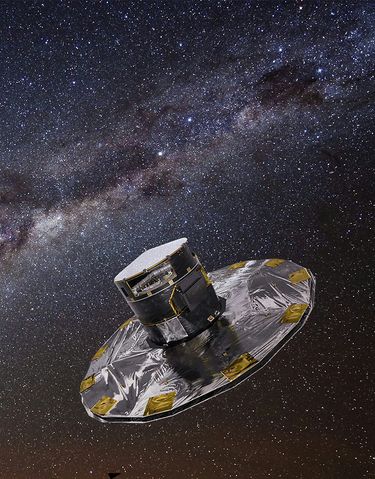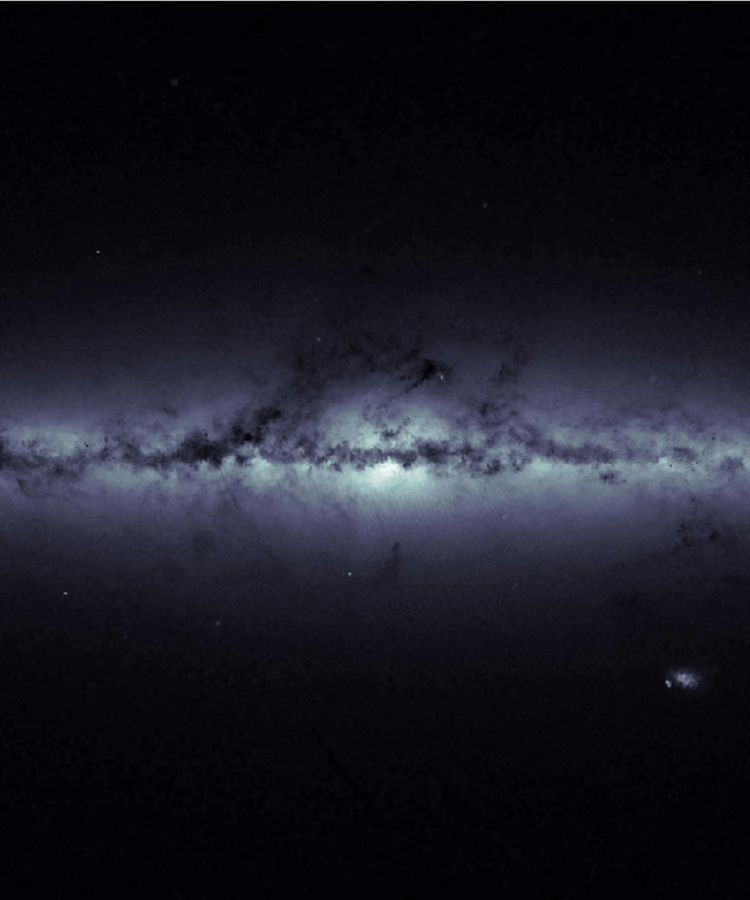Summary
- - Launched in 2013 - Expected lifetime: 5 years - Mission: To make 3D map of the Milky Way - Designed and built by Airbus Defence and Space

In 2013, the Gaia space observatory began scanning the precise position, distance and motion of each of more than a billion stars in the Milky Way in order to draw a 3D map of our galaxy.
During its anticipated lifetime of five years, Gaia will observe each of its sources about 70 times, recording their brightness and position over time and likely discovering new objects.
Much of the stars motion was imparted to them during their birth and studying it allows astronomers to peer back in time to when the Galaxy was forming.
Gaia will also examine the light of stars bent by a huge mass, a phenomenon predicted by Albert Einstein, which was first observed close to the Sun by Sir Eddington during a solar eclipse in 1919.
Gaia operates in a Lissajous-type orbit, around the L2 point of the Sun-Earth system, located 1.5 million km from the Earth in the anti-Sun direction.
With over 40 million observations a day, Gaia discovered its first stellar explosion in another, far away galaxy, in August 2014, just a few weeks after it began its scientific work.
Designed and built by Airbus Defence and Space for the European Space Agency (ESA), the spacecraft is equipped with a digital camera with more than one billion pixels, making it the largest in space. It can detect celestial objects 400,000 times fainter than the human eye can see and if it was on the moon, it could measure a thumbnail of a person on the Earth.
A single integrated instrument is built of silicon carbide, a lightweight and ultra-stable material. A specially engineered sunshield protects the spacecraft and its payload from extreme temperatures.
Airbus Defence and Space teams continue to support Gaia’s operations with up-to-date software that tests, monitors and analyses the satellites performance.
